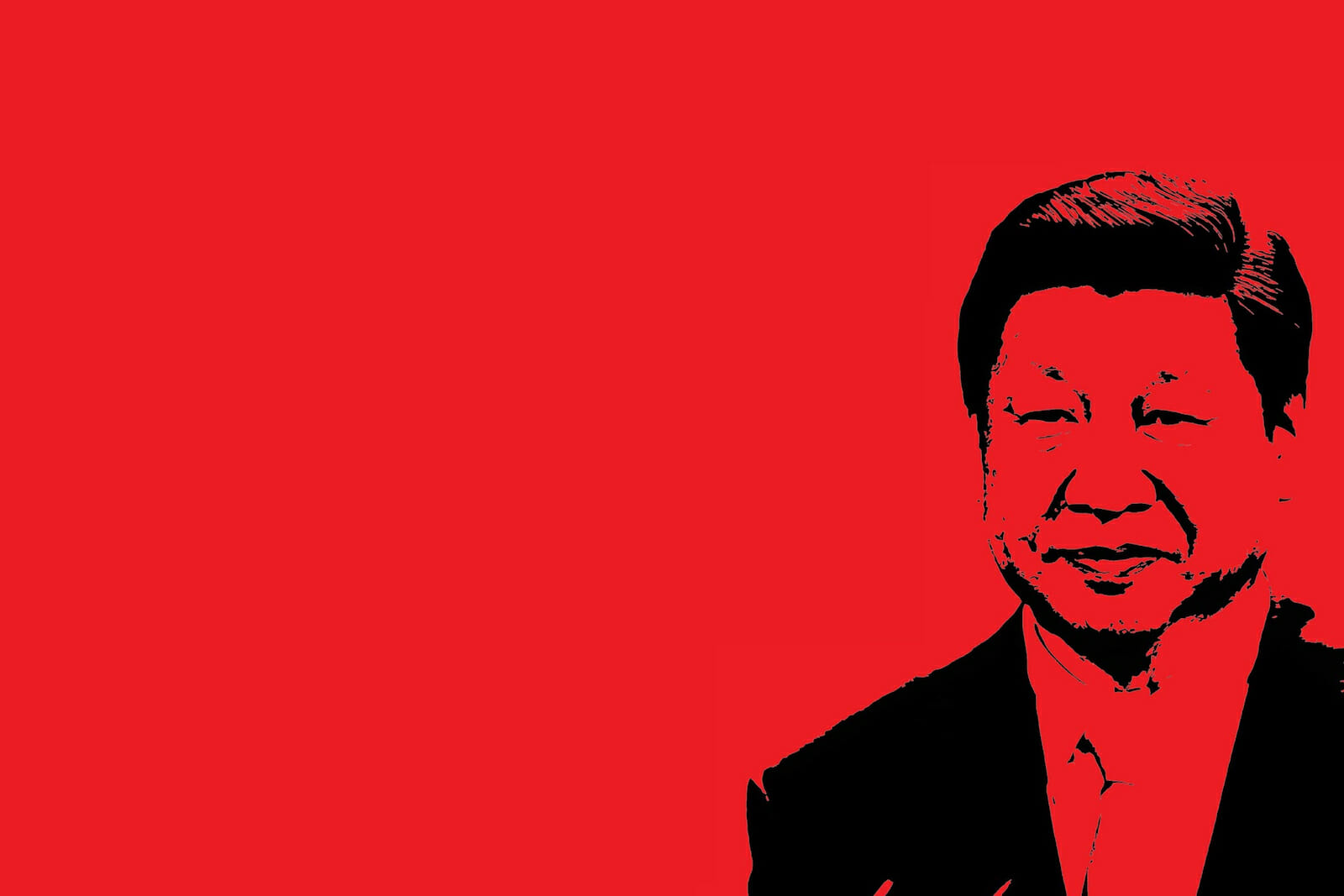
Books
Book Review: ‘Red Flags: Why Xi’s China Is in Jeopardy’
George Magnus writes about the dangers of the Middle-Income Trap in the Middle Kingdom, among other issues, in Red Flags: Why Xi’s China Is in Jeopardy. President Xi’s face adorns the book cover, with his name looming above. Fitting, seeing as China has removed presidential term limits; China’s fate is thus likely to be tied to the decision making of Xi for the next couple decades.
Magnus writes about the dangers of Xi’s likely ascendance to President-for-Life. Ever since the excesses of Mao’s one-man rule, China’s Communist Party has largely ruled by consensus, while provincial governments have served as a counterweight to federal authority via control of their land and many of their local State Owned Enterprises (SOEs). Xi Jinping is challenging this status quo. So-called Xi Jinping Thought is now official party canon, being taught in schools and in the media. The 2012 crackdown on corruption by Xi in his inaugural year was widely seen as a pretense for taking out political opponents and sending a message to his potential opponents. Ever since, Xi has been working to centralize power to himself. Magnus notes that being leader for life largely shields Xi from short-term popular discontent, but also means that every long-term decision, good or bad, will become part of Xi’s legacy. Hence, the book informally reads as a personal policy checklist for Xi.
Red Flags lists four red flags of likely impediments to Chinese economic development. Firstly is debt. China has been an unprecedented money-making machine for the past three decades or so. However, signs are starting to appear of a possible economic slowdown. Most significant is the debt to GDP ratio, which has skyrocketed over the past few years. Magnus writes extensively about how China’s growth, up to this point, has largely been fuelled by credit (debt). China’s much-maligned (by Trump, most notably) trade balance surplus has shrunk to no more than a few percent, statistically insignificant. China could theoretically make up for shrinking foreign demand for goods and services with domestic consumers. Magnus is unfortunately the bearer of bad news in this regard: “Household savings rose from about 5% of disposable income in the late 1970s to about 38% in 2016, or just over 25% of GDP. Savings by companies are also elevated, amounting to about 17% of GDP in 2016.”
Hence, the Xi regime has been trying to maintain economic growth via ever-greater sums of state investment funding. Magnus explicitly warns against this: “The reason the investment rate has to fall is because the more China relies on it, the more inefficient that investment will become.” Such a statement might seem self-evident, but Magnus backs it up with facts. For instance, he points out, “Between 1978 and 2006, for example, China spent between 2 to 4 yuan of investment to get 1 additional yuan of GDP. Since then, the amount has risen steadily to reach about 9 yuan in 2015, corresponding to a marked fall in investment efficiency.”
Magnus writes a lot about the inefficiency of China’s thousands and thousands of SOEs. “Officially, and according to some China-watchers, SOEs now account for just a fifth of output and a tenth of employment. The presumption though that the rest of the economy is in private hands, as we understand it in the West, is incorrect. Many private firms have large or majority state owners, who exercise significant control over senior appointments and corporate strategy, and state ownership is often disguised by multiple layers of investment companies ultimately owned by a state entity. Allowing for these opaque adjustments, the purely private part of the enterprise sector may actually be little higher than 20–30 percent.” SOEs have built much of modern China, but their efforts are increasingly being wasted on skyscrapers and airports that remain almost empty, Chinese Roads-to-Nowhere. A blank check invites planners to ignore long-terms concerns of viability, blinded by short-term gains that go directly into the pockets of Party-affiliated contractors. China’s financial services sector isn’t much better off. Magnus writes about all the bailouts, takeovers and general heavy-handedness by the government of various Chinese banks and other related companies. Due to a slowdown in trade and many other issues discussed in the book, state investment will figure to play an ever-larger role in China’s economy, inefficiency be damned.

The book’s second diagnosed problem for China’s future growth is its currency, the renminbi. Xi mirrors the isolationist mindset of China’s ancient emperors with regards to cash inflows and outflows. It’s very hard for Chinese investors to send renminbi out of the country. Likewise, China restricts the ability of foreigners to own reserves of renminbi, or Chinese financial assets in general. The renminbi is subject not only to this lack of liquidity, but also the confines of a planned economy. China is infamous for its strict control of its currency valuation, as well as its monetary policy via diktats, investment and bailouts. Its ownership of USD and other foreign currency reserves must always be flawlessly balanced to safely back up the value of the renminbi. This resulted, for instance, in the selling off of a trillion of its USD reserves between 2014-2016. The combination of currency illiquidity and over-management limits the ability of the renminbi to fuel Chinese economic growth.
Thirdly, the book mentions the so-called Middle Income Trap. Once a country reaches a certain benchmark of development, it’s hard to maintain further momentum. China’s already experiencing slowed growth due to factors such as increased global manufacturing competition. As Magnus points out, China has already had its coming-out party to the world economy. It can’t join the WTO again or eliminate mass hunger again. Likewise, China has stalled in terms of rural development and education. Rural China is increasingly falling behind the major cities and the hukou system of restricted movement and rights for migrant workers isn’t helping. Students in China still attend far fewer years of school than students in developed countries like the US, especially in advanced fields like IT. These issues of inequality and 21st-century education must be addressed if China is to fully develop.
Lastly, Magnus writes about the demographics crisis. China has one of the highest ratios of elderly people in the world. Combine this with China’s 1.45 birth rate and the gender disparity caused by the one-child policy and you have a ticking time bomb. The workforce is increasingly running out of youngsters who can take the place of retirees, causing a slowdown in economic output. The higher the elderly population becomes, the more each working-age person will have to contribute to pensions and healthcare. The economic burden that only-children will have to shoulder taking care of their aging parents will inevitably lower marriage rates and thus further lower the unsustainably low birth rate.
This is the most dire problem because there’s very little that society can do about it. Xenophobia has prevented any meaningful amount of migration to China, but even if China were to let in tens of millions of foreign workers, that would be a drop in the bucket for a nation of 1.4 billion people. Even after China ended its one-child policy, couples are still averaging well below 2 children, despite increasing prosperity. The only real hope for China’s demographic problem would be a literal ex machina: automation. Robots may be able to generate untold wealth that could buoy a small nation like Singapore, but even an army of robots is unlikely to completely offset the gradual loss of hundreds of millions of working-age people to aging. Even if AI is a magic bullet for all productivity woes, it would take at least a century to meaningfully scale up, by which time China’s population will have substantially shrank. It doesn’t help that China is, in many respects, barely keeping pace in the AI race with the US, Japan and the EU. In the race for artificial intelligence, even being a year behind the competition can cost trillions of dollars; China’s tech sector will likely take a few decades to completely match Silicon Valley. Lastly, it should be noted that not even innovation can overcome the limited resources of our planet. We’re already running out of industrial resources like oil and lithium. It would be foolish to place all of one’s eggs in the basket of a sci-fi utopia.
Red Flags is a very detailed and interesting book about the future of China. Magnus isn’t anti-China by any means; he gives credit to China’s marvelous successes and doesn’t moralize. If anything, the book was too generous by barely mentioning the unrest in Xinjiang and not mentioning the occupation of Tibet at all. In an objective fashion, he succinctly explains China’s problems and offers possible solutions. China has shown an unprecedented ability to adapt to change. This flexibility may wind up being undone not by external adversaries or limitations, but by increasing autocracy. Dictatorship has rarely resulted in long-term, across-the-board growth. One can look at a fellow Communist country for an example: the Soviet Union. Though the USSR made impressive leaps in technology, manufacturing and agricultural output and human longevity, it was ultimately undone by its ideological rigidity. A lack of accountability for its leaders meant that the USSR was forever a captive to bad policy. Likewise, a lack of freedom stunted innovation. If Xi is to avoid the pitfalls of the USSR, he must avoid letting his power get to his head and embrace a flow of ideas from both fellow Party members and private citizens. Xi’s consolidation of control and crackdown on dissent would point otherwise, unfortunately. Only time will tell if China will continues to beat the odds.

